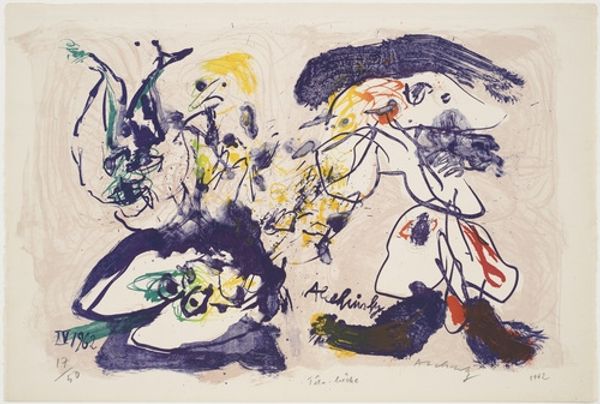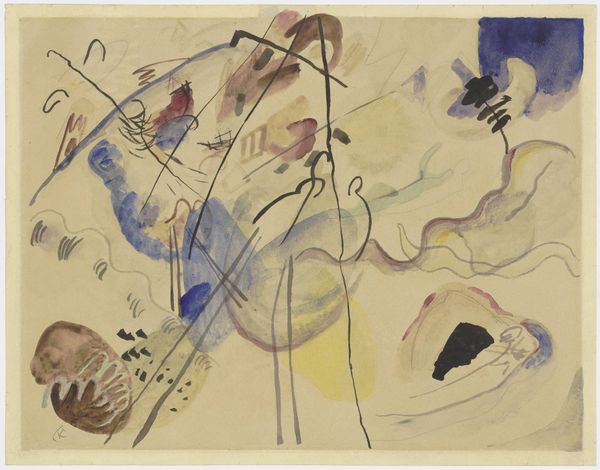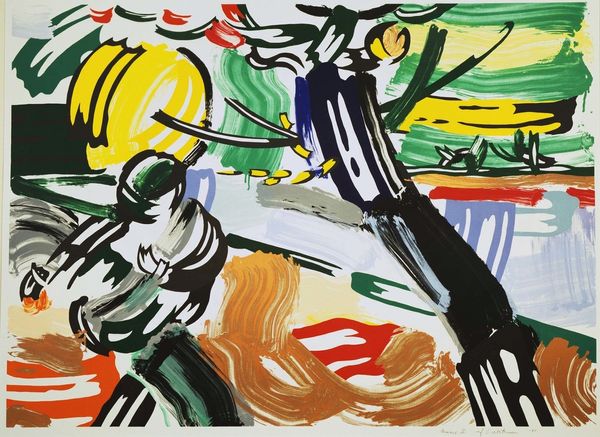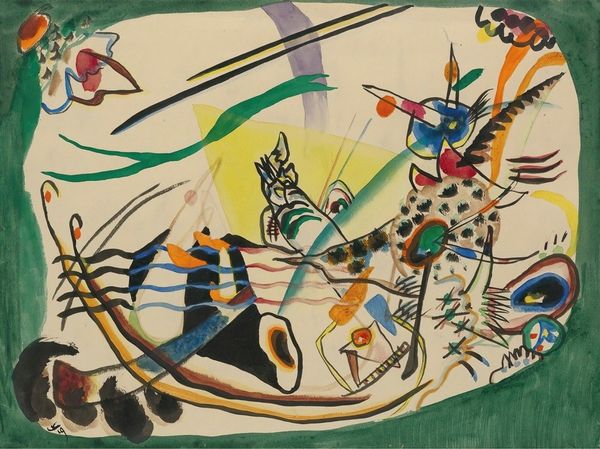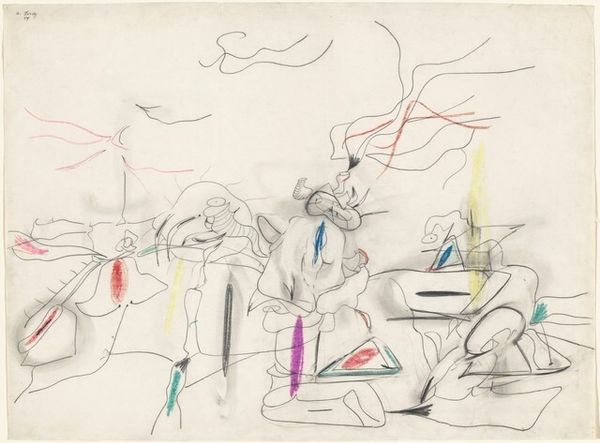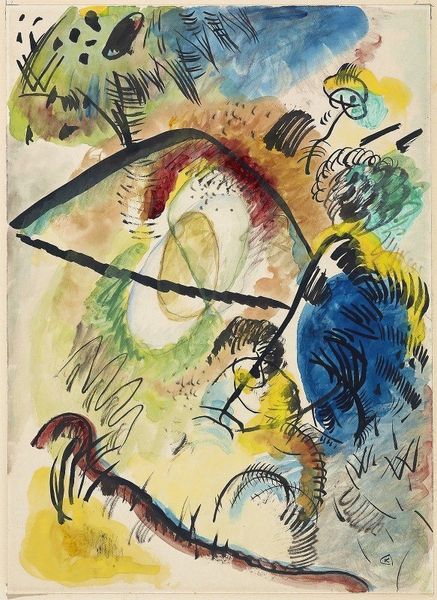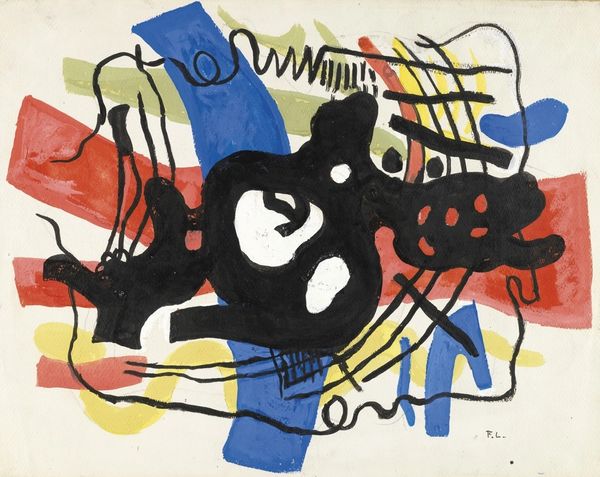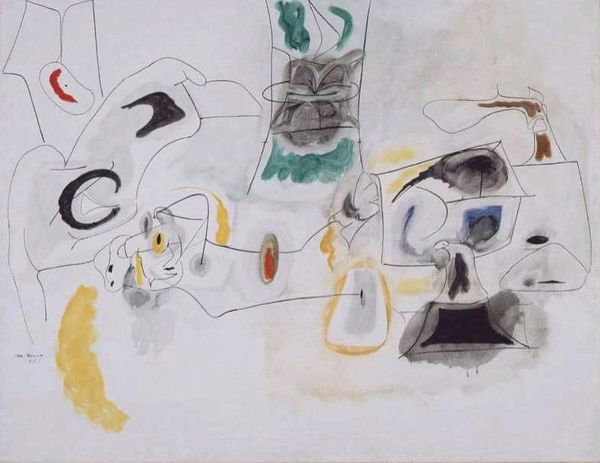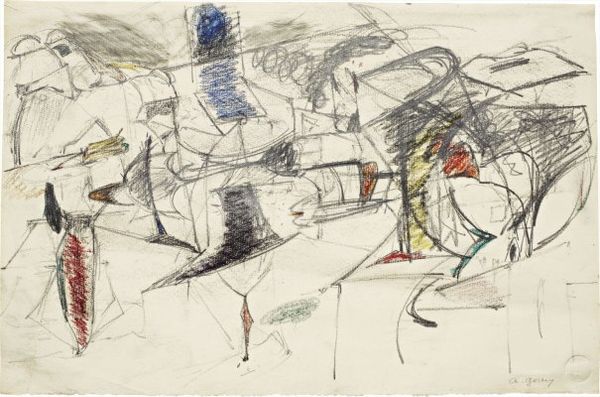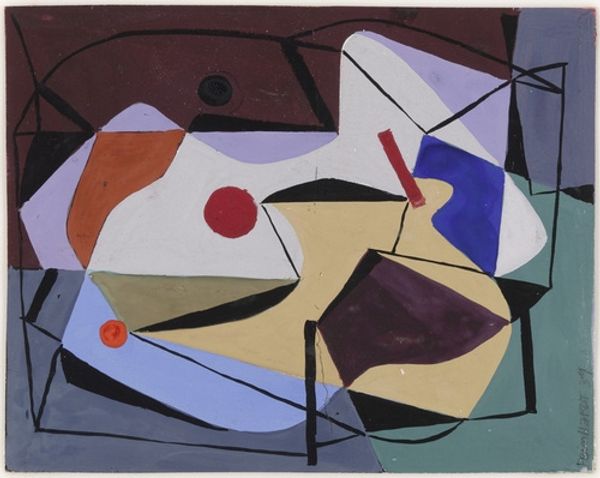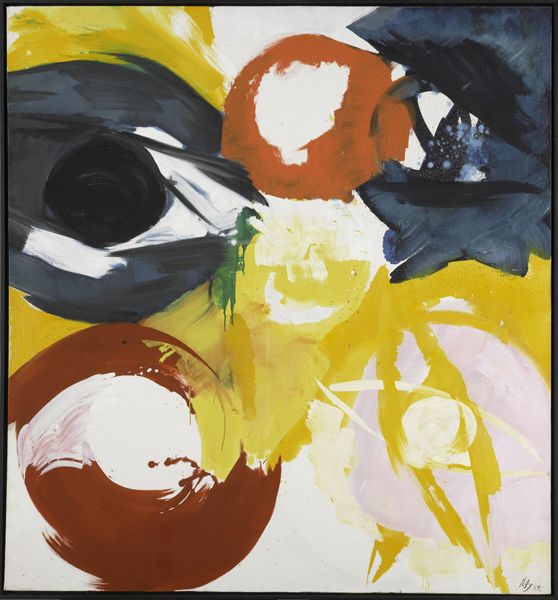
watercolor
#
german-expressionism
#
form
#
watercolor
#
expressionism
#
geometric-abstraction
#
abstraction
#
line
#
symbolism
#
watercolor
Copyright: Public Domain: Artvee
Editor: Here we have Wassily Kandinsky's "Sketch for Composition VII," a watercolor from 1913. I’m really struck by the sheer dynamism of this piece. It’s like controlled chaos, with vibrant colors and bold lines all vying for attention. What do you see in this piece, particularly given your focus on the meaning imbued in images? Curator: For me, Kandinsky's "Sketch for Composition VII" acts as a vortex, drawing from a deep well of cultural memory. The chaotic composition, while seemingly abstract, pulses with symbolic weight. Those fragmented forms evoke a sense of primal upheaval, perhaps tapping into anxieties surrounding modernization and societal change in early 20th-century Europe. Do you see any familiar symbolic language emerging through the abstraction? Editor: Well, I notice the sort of bird-like shape in the lower right…but honestly, I struggle to find concrete symbols in all this abstractness. Curator: Precisely. The bird is suggestive of freedom, or perhaps, a lost Eden – a yearning for something beyond the immediate chaos. Think of the prevalent use of Apocalyptic themes at that time! The sweeping lines and clashing colours aren’t merely aesthetic; they’re charged with emotional intensity, reflecting Kandinsky’s belief that art should express the artist’s inner world and, in turn, unlock something profound within the viewer. Don't you agree? Editor: Yes, now that you mention it, I do see that underlying anxiety and yearning coming through. It's much more than just colors and shapes, and the fragmented forms take on much richer significance now! Thank you! Curator: And thank you! Hopefully we can keep diving deeper into art's iconography!
Comments
No comments
Be the first to comment and join the conversation on the ultimate creative platform.
